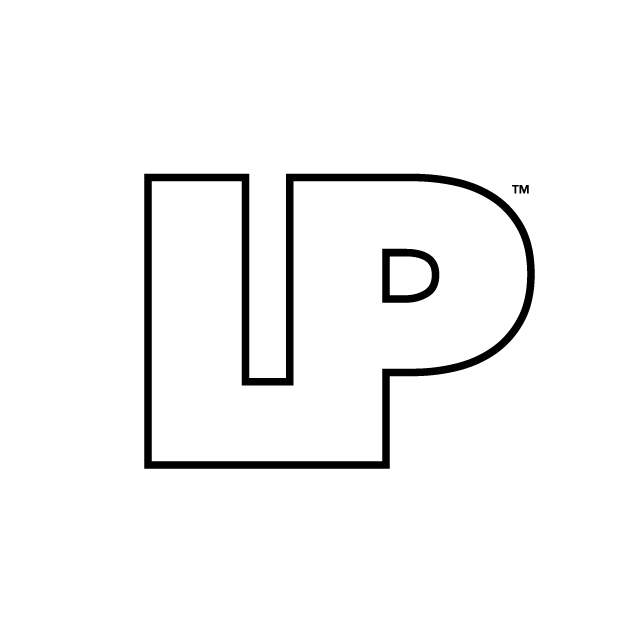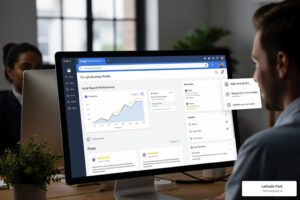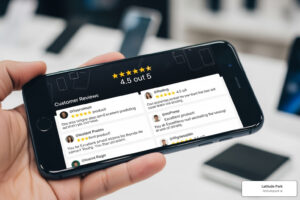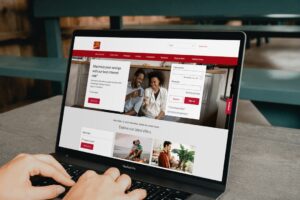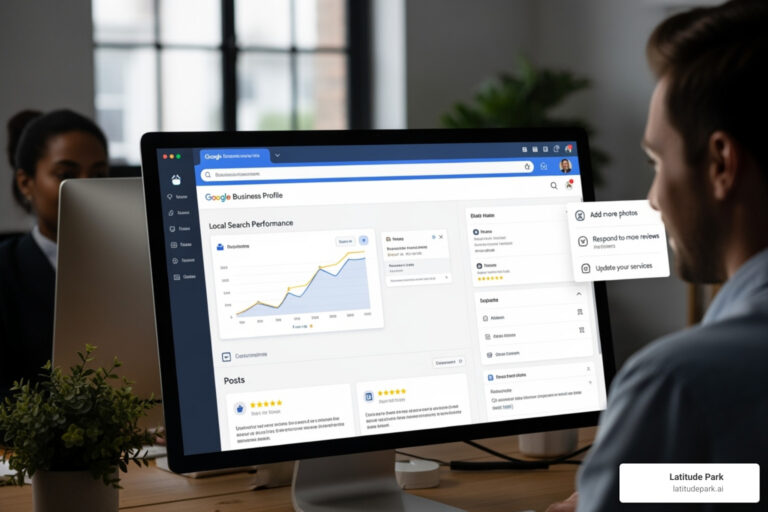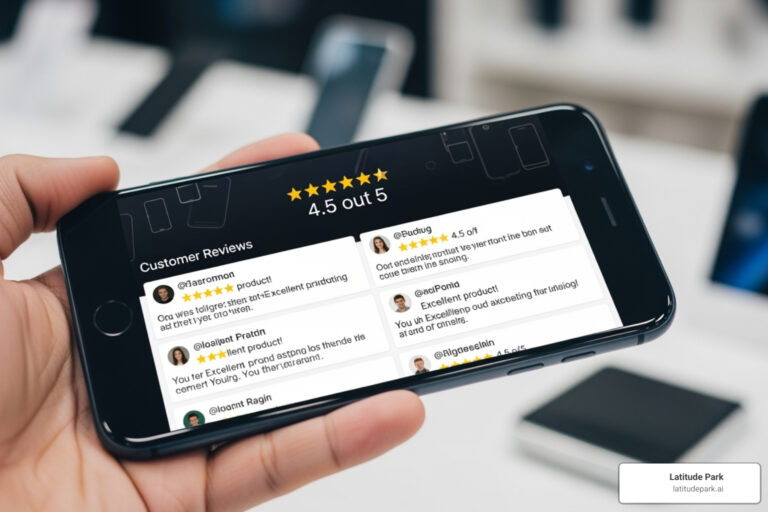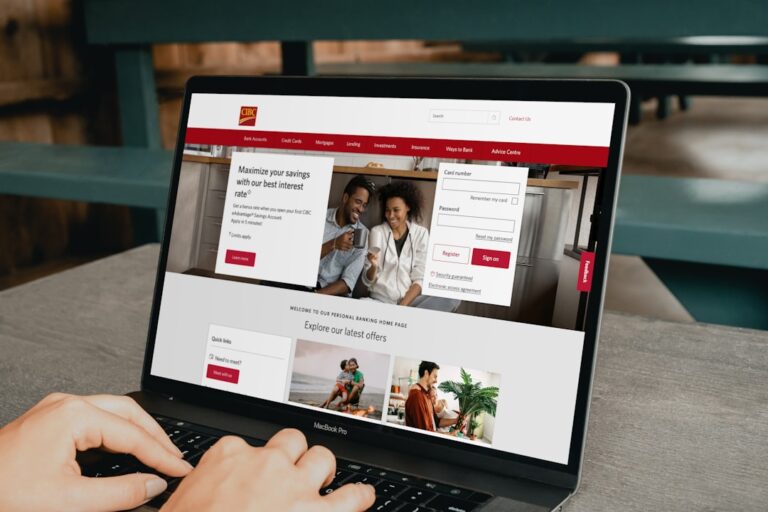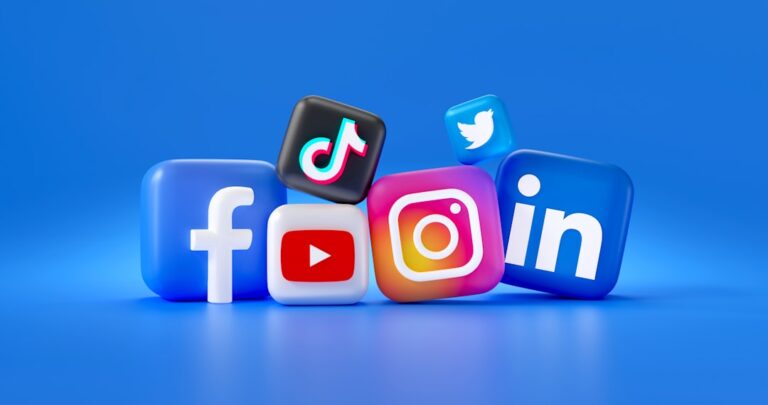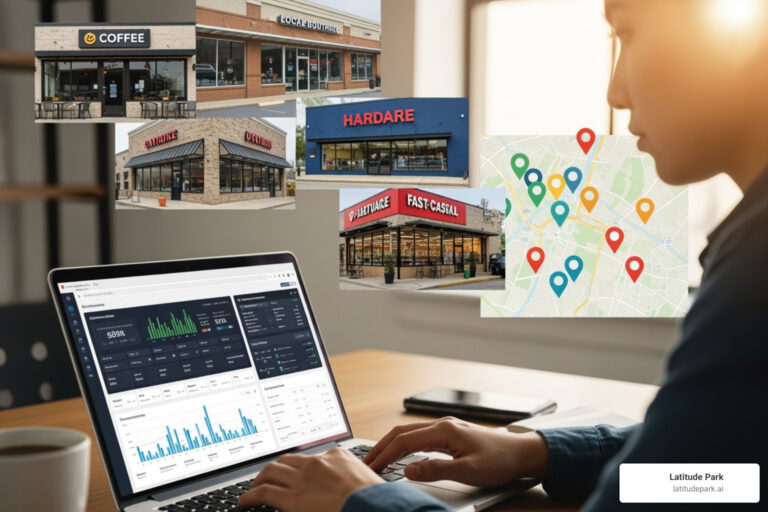For any local business, Google Ads is the most direct line to customers at the very moment they're searching for you. Think of it as a digital shortcut, turning urgent searches like "emergency plumber near me" into immediate, paying customers. This isn't about some fuzzy, long-term brand-building exercise; it's about getting the phone to ring and driving sales right now.
Why Your Business Needs Local Google Ads
As a local business owner, your plate is already full. Your top priority is simple: get more customers. You don't have the time to become a digital marketing wizard, and that’s precisely why a sharp, focused approach to Google Ads for local businesses is such a game-changer. It cuts through all the online noise and connects you directly with people actively looking for the exact solution you provide.
Let's play this out with a practical example. Imagine you run a local HVAC company, and a homeowner's air conditioner gives up on the hottest day of the year. Their first move isn't scrolling through social media—it's a frantic Google search for "AC repair near me." A well-built local ad puts your business right at the top of their screen, complete with your phone number and location. You've just intercepted an immediate need and captured a high-value service call. That’s the raw power of local ads.
Capturing High-Intent Customers
This whole strategy works because it aligns perfectly with how modern customers behave. When a local need arises, they turn to search engines. This isn't just a hunch; the data backs it up completely.
A staggering 46% of all Google searches are performed with local intent. That means nearly half of the people on Google are looking for nearby businesses, products, or services. This single statistic reveals a massive opportunity to connect with your most valuable customer base—the people right in your neighborhood.
To help you get started, we've broken down some of the most important Google Ads concepts you'll need to know.
Core Google Ads Concepts for Local Success
| Concept | What It Is | Why It Matters for Your Local Business (With an Example) |
|---|---|---|
| Keywords | The specific words or phrases people type into Google. | Example: If you're a roofer, instead of bidding on "roofer," you'd bid on "roof repair dallas" or "new roof estimate near me" to catch customers ready to hire. |
| Ad Group | A collection of ads and their related keywords within a campaign. | Example: Your HVAC campaign could have one ad group for "AC Repair" with keywords like "fix broken air conditioner" and another for "Furnace Installation" with keywords like "new furnace cost". |
| Quality Score | A 1-10 rating from Google on the relevance of your keywords, ad copy, and landing page. | Practical Insight: A high score (7+) tells Google your ad is useful, which can lead to lower costs per click. An ad for "emergency plumbing" that leads to a page about emergency plumbing will get a higher score. |
| Ad Rank | The formula Google uses to determine your ad's position on the search results page. | Practical Insight: It's your bid amount x Quality Score. This means you can outrank a competitor with a bigger budget if your ad is more relevant. |
| CTR (Click-Through Rate) | The percentage of people who see your ad and actually click on it. | Practical Insight: A low CTR (under 2-3%) for a search ad often means your ad headline doesn't match the keyword well enough or isn't compelling. |
| Conversion | When a user takes a desired action after clicking your ad. | Example: For a law firm, a conversion isn't just a click—it's someone filling out the "Free Consultation" form on their website. This is what you actually measure success by. |
Understanding these basics is your first step toward building a campaign that doesn't just get seen, but actually gets results.
This guide will give you a straightforward roadmap to turn a modest ad budget into a reliable stream of new business. For an even more comprehensive overview, check out our complete Google Ads for local business guide.
The real value of Google Ads for a local business isn't just getting clicks; it's about getting the right clicks from people in your service area who are ready to make a purchase or schedule a service.
If you're in a service-based industry, a fantastic resource on mastering Google Ads for local business growth offers some excellent, specific strategies. We'll walk you through the must-have components to launch a campaign that delivers measurable results without a crazy-steep learning curve.
Building Your First Local Campaign From Scratch
Diving into Google Ads for the first time can feel like stepping into a cockpit full of buttons and switches. It’s intimidating. But with a clear plan, it stops being a technical chore and becomes a powerful strategic move for your local business. The secret is to ignore the noise and focus on the foundational elements that matter most: your campaign type, budget, service area, and what you count as a "win."
Your first major decision is choosing your campaign type, mainly between a Search campaign and a Performance Max (PMax) campaign.
A classic Search campaign gives you surgical precision. You control the exact keywords that trigger your ads. Practical Example: A local auto repair shop can target the exact keyword "brake repair in Austin" to capture urgent, high-intent customers who are ready to buy, ensuring their ad budget goes directly to the most relevant searches.
On the flip side, Performance Max is Google’s AI-driven powerhouse. It takes your ads and runs them across all of Google's channels—Search, Maps, YouTube, Display, you name it. Practical Example: A new local restaurant could use PMax to show video ads on YouTube to local foodies and display ads on popular blogs, all from one campaign, casting a wider net for brand awareness.
Choosing Your Campaign Battleground
So, which one is right for you?
- Go with a Search campaign if: You want maximum control over which search terms trigger your ads and need to manage a specific budget with extreme care. This is best for lead generation for specific services.
- Consider Performance Max if: You want to reach customers across multiple platforms and are comfortable letting Google's AI find conversion opportunities for you. This is better for broader reach or e-commerce.
For most local businesses just starting out, I almost always recommend a Search campaign. It offers more transparency and control over where your initial budget goes, which is critical when you're learning the ropes.
Expert Insight: Don't get paralyzed by this choice. The most important thing is to start. You can always launch a second campaign type later to test what works best for your specific market and services. A great strategy is to start with Search, find your most profitable keywords, and then use PMax to expand your reach.
This visual gives you a bird's-eye view of the core setup flow for a local campaign.

As you can see, the foundational steps—defining your location, setting a budget, and creating ad groups—are sequential. Each one builds on the last to create a well-structured, effective campaign.
Setting Your Geographic and Financial Boundaries
Once you’ve picked a campaign type, it’s time to draw your lines on the map. Google Ads lets you get incredibly specific here. Don't just target your entire city. Practical Example: An auto repair shop in a large city should target a 10-mile radius around their physical address, not the whole metro area. This prevents paying for clicks from people who are too far away to become customers.
Next up is the budget. You don't need to spend a fortune to get started. In fact, you shouldn't. A modest daily budget, say $15 or $20 a day, is more than enough to start gathering data. The goal on day one isn't to dominate the market; it's to learn what works and then scale intelligently.
Finally—and this is the most critical piece of the puzzle—you absolutely must set up conversion tracking from the get-go. A "conversion" is any valuable action a potential customer takes, such as:
- Making a phone call right from your ad.
- Submitting a contact form on your website.
- Requesting directions to your shop or office.
Without tracking these actions, you are flying completely blind. Insight: You'll see that you spent $50 and got 10 clicks, but you'll have no idea if those clicks led to a single phone call. Setting this up properly ensures you can measure what truly matters: your return on investment.
Crafting Keywords and Ads That Attract Customers

Getting your campaign structure right is the foundation, but the real magic happens in the words you choose. A powerful campaign comes down to two things: finding the exact phrases your local customers are typing into Google and writing ads that speak directly to their needs. This is where we shift from the technical setup to the art of persuasion.
The goal here isn't to chase broad terms like "pizza place." You need to capture high-intent local searches by blending what you do with location-specific keywords. Put yourself in your customer’s shoes. They aren't just searching for any dog groomer; they're looking for "dog grooming in south Austin" or "best tax preparer downtown." That specificity is your biggest advantage.
Finding Your Local Keywords
The best keywords aren’t complicated; they mirror the real language your customers use every day. Start by brainstorming all the services you offer and then pair them with your city, neighborhood, or even nearby landmarks.
Think in terms of these practical combinations:
- Service + Location: "Florist near Union Square", "plumber in Arlington VA"
- Adjective + Service + Location: "Best deep dish pizza in Chicago Loop", "affordable house cleaning Boston"
- "Near Me" Modifiers: "Emergency dog groomer near me", "24/7 locksmith near me"
- Problem-Based Searches: "Tax help for small business Austin TX", "leaky faucet repair San Diego"
This approach immediately filters out clicks from people outside your service area and connects with users who need a local solution, right now. You’re no longer just a florist; you're the florist for their specific neighborhood.
The heart of a winning Google Ads for local businesses strategy is relevance. When you match local keywords with ads that shout your location and services from the rooftops, you send a powerful signal to both Google and the customer: you are the right choice.
Writing Ads That Convert
Once you have your keywords locked in, you need ad copy that stops the scroll. Think of your ad as your digital storefront sign—it has to be compelling enough to make someone stop and look. Focus on what makes your business the obvious choice for a local customer.
Let's break down a few practical examples for different local businesses:
- For a Dog Groomer: "Gentle Dog Grooming in Plano | Same-Day Appts Available! We specialize in anxious dogs. Your pup's comfort is our priority. Book online now."
- For a Florist: "Fresh Flowers Delivered in Denver | Order by 2 PM for Same-Day Delivery. Stunning bouquets for any occasion. Voted Denver's #1 Florist. Shop now."
- For a Tax Preparer: "Local Tax Prep in Scottsdale | Maximize Your Refund. Expert help for individuals & small businesses. Free 15-min consultation. Call today!"
Insight: What makes these ads work? They are specific (Plano, Denver, Scottsdale), highlight a key benefit (same-day, maximize refund), and have a strong, clear call to action (Book now, Shop now, Call today).
Getting this right is more critical than ever, as the financial stakes are climbing. Google Ads has gotten much more expensive, with the average cost per click (CPC) now at $5.26 and the average cost per lead soaring to $70.11. For most local businesses, simply throwing more money at ads isn't a viable option. Strategic optimization of your keywords and ad copy is the only way to make every single dollar count. You can discover more insights about the rising costs for local ads and how to adapt.
Optimizing Your Campaigns and Stretching Your Budget

Getting your campaign live is just the starting line. The real work—and the real profit—begins with ongoing optimization. This is where you roll up your sleeves, dig into the data, and turn a decent campaign into a lead-generating powerhouse for your local business.
Think of it less as a "set it and forget it" machine and more like fine-tuning an engine. Consistent, small adjustments are what lead to peak performance. It all comes down to regularly checking in on your campaign to see what’s working and, just as importantly, what isn't.
Turning Data into Action
You don't need a data science degree to make sense of your Google Ads dashboard. Practical Example: You notice a keyword like "emergency plumber" has a high click-through rate but zero form fills. This could mean your landing page doesn't load fast enough on mobile or the form is too complicated. That's your cue to investigate the page, not just the ad.
The most successful Google Ads for local businesses aren't run by the companies with the biggest budgets. They're run by the ones who are the most diligent. Small, consistent improvements will always outperform a hands-off approach.
Remember, your ad's job is to get the click, but your website's job is to close the deal. This is where many campaigns fall flat. You can have the best ad in the world, but if it leads to a confusing or slow landing page, you've wasted your money. This is why solid conversion rate optimization strategies are non-negotiable.
Your ads also don't exist in a vacuum. A strong overall online presence makes your advertising far more effective. In fact, optimizing your website for local search results can give your paid campaigns a serious boost.
A Simple Optimization Routine
To keep your campaigns in top shape without getting overwhelmed, a simple weekly or monthly check-in is all you need. This proactive management is how you make every dollar in your budget work harder for you.
Here’s a handy checklist to guide you through the most critical optimization tasks. Sticking to this routine will help you catch problems early, double down on what’s working, and steadily improve your campaign’s profitability over time.
Local Ad Campaign Optimization Checklist
| Task | Frequency | Practical Example & What to Look For |
|---|---|---|
| Review Search Terms Report | Weekly | Your ad for "plumber" was triggered by "plumber jobs". Add "jobs" and "careers" to your negative keyword list to stop wasting money on job seekers. |
| Analyze Ad Performance | Weekly | You have three ads. Ad A has a 5% CTR and 2 conversions. Ads B and C have a 2% CTR and 0 conversions. Pause B and C and write new ads based on A. |
| Check Budget Pacing | Weekly | It's the 15th of the month, and you've already spent 80% of your budget. This means you need to lower your daily spend to make it last the full month. |
| Review Keyword Performance | Monthly | A keyword has 100 clicks but zero conversions. It's too broad and wasting money. Pause it and reallocate that budget to your proven, high-converting keywords. |
| Check Location Performance | Monthly | You see that the zip code 90210 has a much lower cost per lead than 90211. You can increase your bids for 90210 to get more of those profitable leads. |
| Review Landing Page Experience | Monthly | Your "mobile-friendliness" score for your landing page is low. This is a red flag that users on phones are having a bad experience and leaving, costing you leads. |
This regular maintenance is the secret to turning an average ad campaign into a predictable source of new customers for your business.
The good news is that many local businesses are naturally set up for success with Google Ads. The average conversion rate across all industries sits around 7.52%, but some local service sectors do exceptionally well. For instance, the Automotive Repair industry boasts an impressive 14.67% average conversion rate, with Animals & Pets close behind at 13.07%. These benchmarks show just how effective a well-managed local campaign can be.
Connecting Ads to Your Broader Local Presence
Your Google Ads campaign doesn't operate in a vacuum. Think of it as a powerful engine; for it to actually move your business forward, it needs to be connected to the rest of the car. For any local business, that "car" is your entire online presence, and the most critical connection point is your Google Business Profile (GBP).
A polished, professional GBP gives your ads instant credibility. When a potential customer sees your ad and then glances at your linked profile—packed with recent, positive reviews, high-quality photos, and accurate business hours—it builds immediate trust. This synergy makes every dollar you spend on ads work that much harder.
Consider this: a study found that 42% of local searchers click on the Google Maps pack results. That’s a huge chunk of potential customers who rely on your GBP to make a decision, underscoring just how vital this integration is.
Supercharge Your Ads with a Strong Local Foundation
To really make this connection work for you, your goal should be to build a robust local ecosystem where your ads and organic presence feed each other. It’s a virtuous cycle that drives sustainable, long-term growth.
Here’s how all the pieces fit together with practical examples:
- Google Business Profile: This is your digital storefront on Google. Insight: A plumber who regularly posts "before and after" photos of their work on their GBP will build more trust than one with a blank profile.
- Customer Reviews: Think of positive reviews as pure gold. Insight: When a searcher sees your ad with a "4.9-star rating from 150 reviews" pulled in automatically, they are far more likely to click it than a competitor's ad with no rating.
- Dedicated Landing Pages: This is a common but costly mistake: sending ad traffic to a generic homepage. Practical Example: An ad for "emergency AC repair" should link to a page exclusively about that service, with a clear headline like "24/7 Emergency AC Repair in Phoenix" and a prominent phone number, not your general services page.
A great local ad campaign gets the click, but a great local presence secures the customer. The two are inseparable for long-term success. Your Google Business Profile isn't just a listing; it's a critical conversion asset that validates the promises your ads make.
Creating a Powerful Local Ecosystem
Beyond running traditional search ads, you need to get smart about how you use your Google Business Profile. To really capture leads from every angle, you should master Google Maps lead generation. This strategy helps you connect with users who prefer searching for services directly on Maps.
Your online listings are the absolute backbone of this entire strategy. If you want to dive deeper into why this foundation is so important, you can explore why a local business listing is essential for growth.
When you successfully weave your ads, GBP, and website into a single, cohesive experience, you create a powerful and trustworthy brand presence that turns curious searchers into loyal customers.
Common Questions About Local Google Ads

If you're thinking about jumping into Google Ads for local businesses, you’re not alone. It’s a powerful tool, but it’s natural to have a few questions before you dive in. Getting clear answers to the most common concerns is the first step toward building a campaign with confidence.
Let's tackle the big one first: budget. How much do you actually need to spend? There's no magic number here, but you don't need a massive budget to get started. For most small local businesses, a great starting point is between $15 to $25 per day.
This amount is enough to gather meaningful data without breaking the bank. Practical Insight: This translates to about $450-$750 per month. Treat this as an investment in learning. You're buying data that will tell you which keywords convert, what ad copy resonates, and which service areas are most profitable for you.
How Soon Can I Expect to See Results?
This is the other critical question every business owner asks. Unlike SEO, which can take months to show results, Google Ads can start delivering traffic almost immediately. As soon as your campaign is approved and live, your ads can appear in front of potential customers.
But "traffic" isn't the same as "profitable results." You might see clicks on day one, but it typically takes a few weeks to gather enough conversion data to make smart optimizations. I always recommend planning for a learning phase of at least 30 days to understand performance before making any big changes.
The most common mistake I see is pulling the plug too early. Give your campaign time to collect data. Those initial weeks are about learning what works, not about achieving a perfect return on investment right out of the gate. For example, you might find after 3 weeks that phone calls are converting great, but form fills are not. That's a valuable insight you wouldn't get if you stopped after one week.
What Makes a Local Ad Successful?
Success isn't just about getting clicks; it's about getting the right clicks that turn into actual customers. While several factors go into a winning local ad campaign, a few really stand out from my experience.
Here are the core components that drive real results:
- Hyper-Local Targeting: Don't just target your entire city. Get granular. Practical Example: A pizzeria should use radius targeting to only show ads to people within a 3-mile delivery zone. This is a simple but powerful way to reduce wasted spend.
- Ad Scheduling: Are you a bakery that closes at 6 PM? Then why run ads at 3 AM? Practical Example: A law firm that only answers phones from 9-5 should schedule their "call-only" ads to run exclusively during those hours to ensure every call gets answered.
- A Strong Call to Action: Your ad has to tell the user exactly what to do next. Be direct. Use clear, action-oriented language like "Call for a Free Quote," "Book Your Appointment Online," or "Visit Our Shop Today."
By focusing on these practical elements, you can build a campaign that doesn't just run—it delivers tangible, measurable value to your local business.
At Latitude Park, we specialize in taking the guesswork out of digital advertising. We build and manage high-performing Google Ads campaigns that connect franchises and small businesses with the local customers they need to grow. If you're ready to get real results, visit us at Latitude Park to learn how we can help.
